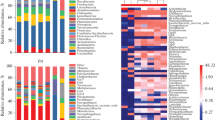Abstract
The performance of the sewage purification system is constantly raising a challenge to the global wastewater treatment industry. The main perspective of the purification process depends largely on the microbial metabolic activities of the system. Thus it is very important to examine the status of microbial metabolic potential in order to understand the efficacy of sewage purification . In this context, the current study focuses significantly in investigating the metabolic status and functional diversity of microbial community that is involved in sewage purification process at East Kolkata Wetland (EKW). On further investigation into the context, it was observed that the microbial load of the municipal wastewater decreases with due course of the purification process at the stabilization pond. To obtain an in-depth view of the metabolic status and the functional diversity of the microbial community involved in sewage purification process, the metabolic potential of the microbial community was examined by Average well colour development and the microbial functional diversity was examined by Shannon diversity Index (H) at different phases of its purification. The result showed that the metabolic potential of the involved microorganisms is markedly distinct at different stages of sewage purification process. The Multivariate analysis (cluster analysis and Principle Component Analysis) of the different microbial communities involved in the sewage purification process clearly reveals that there are significant variations in their metabolic spectrum. In addition to the metabolic potential of the microbial communities, the functional diversity in sewage decreased with concomitant reduction in Biological oxygen demand, a key indicator of biodegradable organic matter in sewage. Thus the current study reveals the decreasing pattern in functional diversity with the progression of sewage purification in the stabilization pond at EKW.




Similar content being viewed by others

References
Furedy, C., Ghosh, D.: Resource conserving traditions and waste disposal: the garbage farming and sewage- fed fisheries of Calcutta. Conserv. Recycl. 7(2–4), 159–165 (1984)
Mukherjee, N.: Pisciculture and the environment: an economic evaluation of sewage-fed fisheries in east Calcutta. Sci. Technol. Dev. 14(2), 73–99 (1996)
Sarkar, S., Ghosh, P.B., Mukherjee, K., Sil, A.K., Saha, T.: Sewage treatment in a single pond system at East Kolkata Wetland, Indai. Water Sci Technol. 60, 2309–2317 (2009)
Sarkar, S., Ghosh, P., Sil, A.K., Saha, T.: Suspended particulate matter dynamics act as a driving force for single pond sewage stabilization system. Ecol. Eng. 69, 206–212 (2014)
Sarkar, S., Tribedi, P., Ghosh, P., Saha, T., Sil, A. K.: Sequential changes of microbial community composition during biological wastewater treatment in single unit waste stabilization system. Waste Biomass Valor. 7(3), 483–493 (2016)
Wagner, M., Loy, A.: Bacterial community composition and function in sewage treatment systems. Curr. Opin. Biotechnol. 13(3), 218–227 (2002)
Nielsen, P.H., Saunders, A.M., Hansen, A.A., Larsen, P., Nielsen, J.L.: Microbial communities involved in enhanced biological phosphorus removal from wastewater-a model system in environmental biotechnology. Curr. Opin. Biotechnol. 23(3), 452–459 (2012)
Yu, K., Zhang, T.: Metagenomic and metatranscriptomic analysis of microbial community structure and gene expression of activated sludge. PLoS One 7(5), e38183 (2012)
Tilman, D.: Functional diversity. In: Levin, S.A. (ed.) Encyclopedia of Biodiversity, vol. 3, pp. 109–120. Academic Press, New York (2001)
Diaz, S., Cabido, M.: Vive la difference: plant functional diversity matters to ecosystem processes. Trends Ecol. Evol. 16(11), 646–655 (2001)
Al-Mutairi, N.: Functional biodiversity of microbial communities in aerobic selector slaughterhouse wastewater. Water Environ. Res. 79, 660–666 (2007)
Tribedi, P., Sil, A.K.: Bioaugmentation of polyethylene succinate contaminated soil with Pseudomonas sp. AKS2 results in increased microbial activity and better polymer degradation. Environ. Sci. Pollut. Res. Int. 20, 1318–1326 (2013)
Tribedi, P., Sil, A.K.: Founder effect uncovers a new axis in polyethylene succinate bioremediation during biostimulation. FEMS Microbiol. Lett. 346, 113–120 (2013)
Franson, M.H.: Standard methods for the examination of water and wastewater, 18th edn, pp. 4-98–5-1. American Public Health Association, Washington, D.C. (1992)
Choi, K.H., Dobbs, F.C.: Comparison of two kinds of biolog microplates (GN and ECO) in their ability to distinguish among aquatic microbial communities. J. Microbiol. Method 36, 203–213 (1999)
Garland, J.L.: Analysis and interpretation of community-level physiological profiles in microbial ecology. FEMS Microbiol. Ecol. 24, 289–300 (1997)
Yao, H.Y., Xu, J.M., Huang, C.Y.: Substrate utilization pattern, biomass and activity of microbial communities in a sequence of heavy metal-polluted paddy soils. Geoderma 115, 139–148 (2003)
Nannipieri, P., Ascher, J., Ceccheriui, M.T., Landi, L., Pietramellara, G., Renella, G.: Microbial diversity and soil functions. Eur. J. Soil Sci. 54, 655–670 (2003)
Garland, J.L., Mills, A.L.: Classification and characterization of heterotrophic microbial communities on the basis of patterns of community-level sole-carbon-source utilization. Appl. Environ. Microbiol. 57, 2351–2359 (1991)
Reardon, C.L., Cummings, D.E., Petzke, L.M., Kinsall, B.L., Watson, D.B., Peyton, B.M., Geesey, G.G.: Composition and diversity of microbial communities recovered from surrogate minerals incubated in an acidic uranium-contaminated aquifer. Appl. Environ. Microbiol. 70, 6037–6046 (2004)
Teng, Y., Luo, Y., Sun, M., Liu, Z., Li, Z., Christie, P.: Effect of bioaugmentation by Paracoccus sp. strain HPD-2 on the soil microbial community and removal of polycyclic aromatic hydrocarbons from an aged contaminated soil. Bioresour. Technol. 101, 3437–3443 (2010)
Acknowledgments
This work is supported by a grant-in-aid from Department of Environment, Government of West Bengal, India (Sanctioned No. EN/P/1858/T-VIII-2/004/2009).
Author information
Authors and Affiliations
Corresponding authors
Ethics declarations
Conflict of interest
Authors declare no conflict of interest.
Rights and permissions
About this article
Cite this article
Sarkar, S., Tribedi, P., Das Gupta, A. et al. Microbial Functional Diversity Decreases with Sewage Purification in Stabilization Ponds. Waste Biomass Valor 8, 417–423 (2017). https://doi.org/10.1007/s12649-016-9571-8
Received:
Accepted:
Published:
Issue Date:
DOI: https://doi.org/10.1007/s12649-016-9571-8



